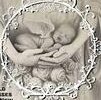Choosing attire for your loved one’s final journey is an important, but often overlooked, detail. Burial gowns, formerly known as shrouds, provide a unique opportunity to say goodbye in a style that is both meaningful and respectful.
Some families choose to select outfits worn during life, while others prefer a gown made specially for the occasion. Regardless of your choice, it’s a good idea to consult your funeral professional for guidance. This person will be able to give you the best recommendations for your loved one’s unique situation.
Generally speaking, most people are not buried in the clothing they wear for their viewing or funeral. However, there are times when this is appropriate, such as with some religious customs. In other cases, clothing may be selected that reflects their personality, style preferences, or career choice. For example, if your loved one was a professional singer or actor, they might be dressed in their costume for the final performance.
Most of the time, the garments chosen will be discarded after the service, and will decompose naturally with the body. However, if the person who died was going to be cremated after the service, their clothes might need to be removed for storage or donation. It’s also important to note that if your loved one is buried in an eco-friendly cemetery, the outfit must be made of natural materials.
The earliest burial garments were called “burial clothes” or “burial shrouds.” These were akin to the clothes that a living person would wear. They could have elaborate details like embroidery or lace and were usually designed with a front opening for ease of dressing the corpse. Some antebellum garments even resembled wedding dresses!
Today, you can purchase ready-made burial gowns or make your own. There are plenty of resources online that can help you with the design process, as well as tips and tricks for making a clean stitch. But, remember that a homemade shroud doesn’t need the finest seams or stitching, just enough to be neat and tidy. Those who wrapped a friend in leaves and mosses did not need the best sewing skills, either.
Many people who sew have found a way to use their talents in the service of others. For instance, a member of Grandview United Methodist Church in Springfield, Ill., sewed angel gowns for the infants of her congregation who were stillborn or who died shortly after birth. Her efforts speak to the fact that every human life, no matter how short, is sacred and deserves special care in its last days. She has since expanded her effort to include sewing garments for babies in the NICU and to knit caps and blankets for premature babies. She’s also begun to work with local hospice nurses to provide clothes for children who die at home or in their sleep. She calls it her “calling.” For more information, contact Vaughn Greene Funeral Services. Their caring and compassionate staff can help you understand your options for viewing and burial apparel.
